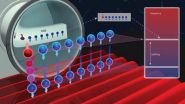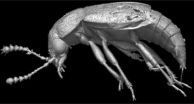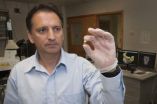(Press-News.org) WASHINGTON -- Everyone involved in the academic chemical research enterprise -- from researchers and principal investigators to university leadership -- has an important role to play in establishing and promoting a strong, positive safety culture, says a new report from the National Research Council. This requires a constant commitment to safety organization-wide and emphasis on identifying and solving problems, rather than merely adhering to a set of rules and assigning blame when those rules are not followed.
Chemical hazards can be found in many academic fields and settings, including the biological sciences, medical schools, engineering disciplines, and art studios. Recent serious and some fatal accidents in research laboratories at U.S. universities have prompted government agencies, professional societies, industries, and universities themselves to re-examine the issue of safety in chemical research.
"The shift away from mere compliance and toward promoting a strong, positive safety culture has already yielded benefits in industries such as aviation and health care," said H. Holden Thorp, provost and distinguished professor of chemistry and medicine at Washington University in St. Louis, and chair of the committee that wrote the report. "We hope our recommendations help move academic chemical research in a similar fashion -- toward the adoption of a culture of safety in laboratories that goes beyond inspections, standard operating procedures, and chemical safety plans, all with the ultimate goal of protecting the lives and health of those who work there."
The availability and commitment of university resources to lab safety vary across institutions, the committee found. It identified five major groups at universities and the steps they should take to support a strong safety culture:
Presidents, chancellors, and provosts should demonstrate that safety is a core value of their institutions by discussing safety frequently and publicly, and encouraging others to do so as well. They should use university resources in ways that support safety, for example by paying for personal protective equipment and hazardous waste disposal. They also should have in place a comprehensive risk management plan for lab safety that addresses prevention, mitigation, and emergency response.
Vice presidents for research and deans should ensure that their institutions only undertake areas of research that they can carry out safely. They also should make sure everyone involved in the research knows his or her role in supporting safety, and should develop reporting structures that better integrate safety management into overall research management.
Principal investigators and department chairs are responsible for establishing a strong, positive safety culture in the laboratories they oversee, by demonstrating safe practices and wearing personal protective equipment, ensuring researchers are properly trained in safety before they begin any work, and encouraging open, ongoing dialogue about safety concerns.
Researchers have a responsibility for supporting safety culture in the laboratories where they work and should be encouraged to take on leadership roles, such as serving on safety committees and taking part in non-punitive, walk-through inspections of other laboratories. Institutions should provide researchers with the equipment, training, systems, and support they need to work safely.
Environmental health and safety staff should partner with administrators, faculty, and researchers to go beyond compliance and support these groups as they undertake actions to establish a strong, positive safety culture.
"Our recommendations for improving the overall safety performance of laboratories are grounded in insights from the behavioral sciences, while taking into consideration what we know about chemistry safety," said committee vice chair David DeJoy, professor emeritus of health promotion and behavior and director emeritus of the Workplace Health Group in the College of Public Health at the University of Georgia. "The committee used its behavioral sciences knowledge together with an examination of successful safety systems from other sectors, to draw lessons that could be applied in academic laboratory research."
In addition to improving the organizational dynamics that drive safety practice, laboratories should conduct analyses that will help them identify and mitigate hazards, the report says. One key approach to identifying dangers before they cause any harm is to report and collect data on near misses -- situations in which a combination of unsafe conditions and/or behaviors could have led to injuries or other adverse outcomes, but did not. Such data often are repressed or distorted when there is punitive action in response to incidents.
The committee found that though training is an important element of a positive safety culture, there is a lack of comprehensive, ongoing, and laboratory-centric training and education for various groups within the research community. Therefore, department leaders and principal investigators, in partnership with environmental health and safety professionals, should develop and implement initial, ongoing, and periodic refresher training that ensures understanding of potential hazards and associated risks, and the ability to execute proper protective measures to mitigate them.
INFORMATION:
The study was sponsored by the National Science Foundation, U.S. Department of Energy, National Institute of Standards and Technology, E.I. du Pont de Nemours and Co., ExxonMobil Chemical Co., and the American Chemical Society. The National Academy of Sciences, National Academy of Engineering, Institute of Medicine, and National Research Council make up the National Academies. They are private, independent nonprofit institutions that provide science, technology, and health policy advice under a congressional charter granted in 1863. The National Research Council is the principal operating arm of the National Academy of Sciences and the National Academy of Engineering. For more information, visit http://www.national-academies.org. A committee roster follows.
Contacts:
Lauren Rugani, Media Officer
Chelsea Dickson, Media Associate
Office of News and Public Information
202-334-2138; e-mail news@nas.edu
http://www.national-academies.org/newsroom
Twitter: @NAS_news and @NASciences
RSS feed: http://www.nationalacademies.org/rss/index.html
Flickr: http://www.flickr.com/photos/nationalacademyofsciences/sets
Pre-publication copies of Safe Science: Promoting a Culture of Safety in Academic Chemical Research are available from the National Academies Press on the Internet at http://www.nap.edu or by calling 202-334-3313 or 1-800-624-6242. Reporters may obtain a copy from the Office of News and Public Information (contacts listed above).
NATIONAL RESEARCH COUNCIL
Division on Earth and Life Studies
Board on Chemical Sciences and Technology
Division of Behavioral and Social Sciences and Education
Board on Human-Systems Integration
Committee on Establishing and Promoting a Culture of Safety in Academic Laboratory Research
H. Holden Thorp (chair)
Provost
Office of the Provost
Washington University
St. Louis
David M. DeJoy (vice chair)
Professor Emeritus
Department of Health Promotion and Behavior
College of Public Health
University of Georgia
Athens
John E. Bercaw*
Centennial Professor of Chemistry
Department of Chemistry
California Institute of Technology
Pasadena
Robert G. Bergman*
Gerald E.K. Branch Distinguished Professor
Department of Chemistry
University of California
Berkeley
Joseph M. Deeb
Human Factors Adviser and Lead
Human Factors Center of Excellence
Exxon Mobil Corp.
Houston
Theodore G. Goodson III
Richard Barry Bernstein Collegiate Professor of Chemistry
Department of Chemistry
University of Michigan
Ann Arbor
Andrew S. Imada
Independent Consultant
A.S. Imada and Associates
Carmichael, Calif.
Kimberly B. Jeskie
Director
Integrated Operations Support Division
Oak Ridge National Laboratory
Oak Ridge, Tenn.
Bradley L. Pentelute
Assistant Professor
Department of Chemistry
Massachusetts Institute of Technology
Cambridge
Karlene H. Roberts
Professor Emeritus
Haas School of Business
University of California
Berkeley
Jennifer M. Schomaker
Assistant Professor of Chemistry
University of Wisconsin
Madison
Alice M. Young
Associate Vice President for Research (Research Integrity)
Texas Tech University
Lubbock
STAFF
Douglas Friedman
Study Director
* Member, National Academy of Sciences
New report calls for strong, positive safety culture in academic chemical labs
2014-07-31
ELSE PRESS RELEASES FROM THIS DATE:
Spin diagnostics
2014-07-31
Magnetic resonance imaging (MRI), which is the medical application of nuclear magnetic resonance spectroscopy, is a powerful diagnostic tool. MRI works by resonantly exciting hydrogen atoms and measuring the relaxation time -- different materials return to equilibrium at different rates; this is how contrast develops (i.e. between soft and hard tissue). By comparing the measurements to a known spectrum of relaxation times, medical professionals can determine whether the imaged tissue is muscle, bone, or even a cancerous growth. At its heart, MRI operates by quantum principles, ...
Pressure probing potential photoelectronic manufacturing compound
2014-07-31
Washington, D.C.— Molybdenum disulfide is a compound often used in dry lubricants and in petroleum refining. Its semiconducting ability and similarity to the carbon-based graphene makes molybdenum disulfide of interest to scientists as a possible candidate for use in the manufacture of electronics, particularly photoelectronics.
New work from a team including several Carnegie scientists reveals that molybdenum disulfide becomes metallic under intense pressure. It is published in Physical Review Letters.
Molybdenum disulfide crystalizes in a layered structure, with ...
Oldest rove beetle in the Omaliini tribe found in French amber
2014-07-31
An international team of scientists from Spain, France, and the U.S. has discovered and described a rove beetle that is the oldest definitive member of the tribe Omaliini that has ever been found in amber. The discovery and description were made possible through the use of the propagation phase-contrast X-ray synchrotron imaging technique, which allows the detailed study of otherwise invisible specimens in opaque amber. The new species is described in the journal Annals of the Entomological Society of America in an article called "Oldest Omaliini (Coleoptera: Staphylinidae: ...
Free pores for molecule transport
2014-07-31
This news release is available in German.
Metal-organic frameworks (MOFs) can take up gases similar to a sponge that soaks up liquids. Hence, these highly porous materials are suited for storing hydrogen or greenhouse gases. However, loading of many MOFs is inhibited by barriers. Scien-tists of Karlsruhe Institute of Technology (KIT) now report in Nature Communications that the barriers are caused by cor-rosion of the MOF surface. This can be prevented by water-free synthesis and storing strategies.
MOFs are crystalline materials consisting of metallic nodes ...
Scientists shine bright new light on how living things capture energy from the sun
2014-07-31
Since Alexandre Edmond Becquerel first discovered the photovoltaic effect in 1839, humankind has sought to further understand and harness the power of sunlight for its own purposes. In a new research report published in the August 2014 issue of the FASEB Journal, scientists may have uncovered a new method of exploiting the power of sunlight by focusing on a naturally occurring combination of lipids that have been strikingly conserved throughout evolution. This conservation—or persistence over time and across species—suggests that this specific natural combination of lipids ...
Misinformation diffusing online
2014-07-31
The spread of misinformation through online social networks is becoming an increasingly worrying problem. Researchers in India have now modeled how such fictions and diffuse through those networks. They described details of their research and the taxonomy that could help those who run, regulate and use online social networks better understand how to slow or even prevent the spread of misinformation to the wider public.
Krishna Kumar and G. Geethakumari of the Department of Computer Science and Information Systems, at BITS-Pilani, Hyderabad Campus, in Andhra Pradesh, India, ...
Lead in teeth can tell a body's tale, UF study finds
2014-07-31
GAINESVILLE, Fla. – Your teeth can tell stories about you, and not just that you always forget to floss.
A study led by University of Florida geology researcher George D. Kamenov showed that trace amounts of lead in modern and historical human teeth can give clues about where they came from. The paper will be published in the August issue of Science of The Total Environment.
The discovery could help police solve cold cases, Kamenov said. For instance, if an unidentified decomposed body is found, testing the lead in the teeth could immediately help focus the investigation ...
Scientists discover biochemical mechanisms contributing to fibromuscular dysplasia
2014-07-31
An important step has been made to help better identify and treat those with fibromuscular dysplasia (FMD). FMD causes both an abnormal narrowing and enlarging of medium sized arteries in the body, which can restrict blood flow to the kidneys and other organs causing damage. In a new report appearing in August 2014 issue of The FASEB Journal, scientists provide evidence that that FMD may not be limited to the arteries as currently believed. In addition, they show a connection to abnormalities of bones and joints, as well as evidence that inflammation may be driving the ...
New paper describes how DNA avoids damage from UV light
2014-07-31
BOZEMAN, Mont. – In the same week that the U.S. surgeon general issued a 101-page report about the dangers of skin cancer, researchers at Montana State University published a paper breaking new ground on how DNA – the genetic code in every cell – responds when exposed to ultraviolet (UV) light.
The findings advance fundamental understanding of DNA damage by the UV rays found in sunlight. This damage can lead to skin cancer, aging and some degenerative eye diseases.
"Our paper advances foundational knowledge about how DNA responds to UV radiation. In our experiments, ...
Magnetic resonance imaging in patients with transient ischemic attack
2014-07-31
Transient ischemic attack (TIA) is a temporary event, which portends a higher risk of a disabling stroke following the TIA. However, the evaluation and management of TIA vary worldwide and is debated and controversial. Dr. Mohamed Al-Khaled from University of Lübeck in Germany considered With the development of brain imaging, particularly diffusion weighted imaging-magnetic resonance imaging (DWI-MRI), the diagnosis of TIA changed from time-based definition to a tissue-based one. DWI-MRI became a mandatory tool in the TIA workup. The DWI-MRI provides not only the evidence ...



